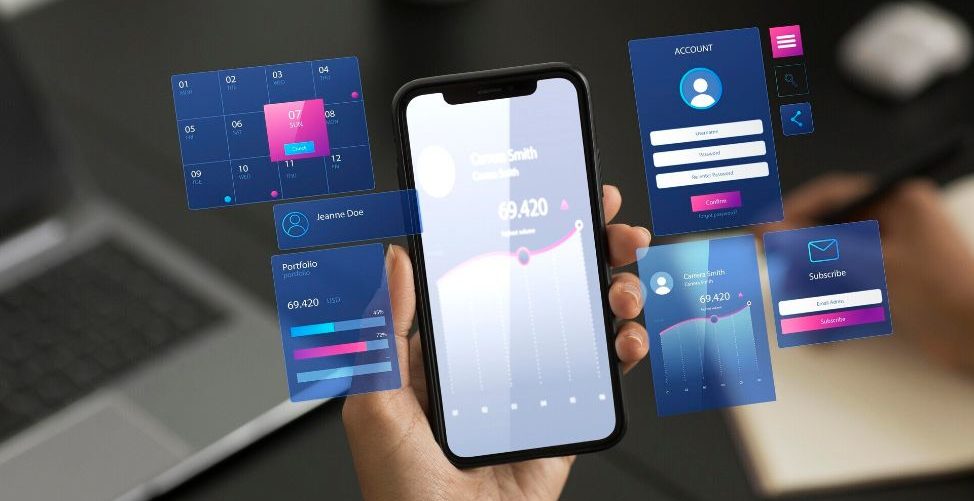Blockchain Application Development: A Comprehensive Guide in Australia
The blockchain tech market, pegged at $10.2 billion in 2022, is on track for exponential growth with an expected CAGR of 87.7% from 2023 to 2030. This impressive surge underscores the increasing adoption and transformative potential of blockchain application development across various industries worldwide.
Unlike traditional app development, blockchain introduces a whole new playbook of features and challenges, making it a real game-changer in the tech world. Now, here we go to dig deeper into this fascinating and expansive field.

Key Steps for Blockchain Application Development
Here’s a rundown of the essential steps to develop a successful blockchain application:
Analyze the Market
Blockchain technology is making waves across various industries, each with its own set of challenges and opportunities. Grasping the market landscape is vital before starting on blockchain application development. Here’s how blockchain is applied in different sectors:
- Banking and finance: Blockchain is shaking up financial transactions with enhanced security, transparency, and efficiency.
- Insurance: Blockchain boosts transparency and slashes costs in insurance processes.
- Healthcare: Blockchain ensures data security and interoperability in healthcare, enabling the secure exchange of sensitive patient information among healthcare providers.
- Real Estate: Blockchain simplifies property transactions by providing a secure, transparent ledger for tracking ownership and transfers of real estate assets.
- Retail: Blockchain guarantees product authenticity and supply chain transparency, reducing counterfeit goods and building trust between consumers and retailers.
- Supply Chain: Blockchain enables end-to-end traceability of goods, improving supply chain efficiency and cutting down on fraud in sectors like agriculture, transportation, and logistics.
- Gaming: Blockchain introduces new monetization models and enhances digital asset ownership in gaming, with platforms like Ethereum enabling decentralized gaming applications.
Read more: The rise of Blockchain Technology in Banking
Generate an Idea
Creating a blockchain app starts with identifying a real-world problem that blockchain can effectively solve. Here’s how to get started:
- Identify a problem: Look for inefficiencies, lack of transparency, high transaction costs, or security issues in existing systems within your target industry.
- Draft business requirements: Define clear objectives and functionalities for your blockchain app. What’s more, outline user needs, regulatory requirements, and technical specifications.
By clearly defining the problem and drafting detailed business requirements, you lay a solid foundation for your blockchain application.
Conduct Competitor Research
Competitor research is crucial for understanding market trends, identifying gaps, and refining your blockchain app idea. Here’s how to do it:
- Identify competitors: Research companies already offering blockchain solutions in your target industry.
- Analyze offerings: Study their features, user experience, pricing models, and market positioning.
- Identify strengths and weaknesses: Determine what competitors do well and where they fall short. Use this information to differentiate your blockchain app.
Read more: What can blockchain tech offer eCommerce beyond crypto
Choose a Platform for Your Blockchain Project
Selecting the right blockchain platform is crucial as it determines your application’s capabilities, scalability, and suitability. Here are some key platforms to consider:
- Ethereum: Known for its robust ecosystem of decentralized applications (dApps) and smart contracts. It’s widely used for creating tokens (ERC-20, ERC-721) and decentralized finance (DeFi) applications.
- Hyperledger: An open-source collaborative effort offering enterprise-focused blockchain frameworks like Hyperledger Fabric and Hyperledger Besu, ideal for privacy, permissioned blockchains, and interoperability.
- R3 Corda: Designed for businesses, Corda facilitates direct transactions between parties while preserving privacy and confidentiality. It’s used in financial services for trade finance, insurance, and capital markets.
- Ripple: RippleNet is a global payments network built on the Ripple blockchain protocol, facilitating fast and low-cost cross-border payments and enabling real-time gross settlement systems.
Choosing the right platform depends on factors such as your project’s scalability needs, desired consensus mechanism, regulatory requirements, and development expertise.
Design Your Blockchain App
Designing your blockchain app involves creating a comprehensive architecture and user interface. Here’s how to approach it:
- Architecture design: Define the system architecture, including blockchain nodes, consensus mechanisms, and data storage protocols.
- UI/UX design: Design a user-friendly interface that simplifies interaction with blockchain features. Focus on usability, data visualization, and secure user authentication.
Develop and Test
Development and testing are critical phases in blockchain application development. Here’s how to tackle these stages:
- Develop with secure code: Implement blockchain protocols, smart contracts, and application logic using secure coding practices.
- Testing: Conduct rigorous testing, including functional, security, and performance testing. Ensure compliance with industry standards and regulatory requirements.
Maintenance and Support
Ongoing maintenance and support are essential for the sustainability of your blockchain app. Here’s how to approach it:
- Update and enhance: Regularly update blockchain protocols, smart contracts, and application features to address security vulnerabilities and improve functionality.
- User support: Provide technical support and training to users. Monitor system performance and address issues promptly to maintain operational continuity.
Marketing and Promotion
Launching your blockchain app successfully requires effective marketing and promotion strategies:
- Content marketing: Create informative content about blockchain technology and your app’s features. Publish articles, blogs, and case studies to educate your target audience.
- Social media marketing: Engage with potential users on social media platforms. Share updates, customer testimonials, and industry insights to build credibility.
- Partnerships and collaborations: Collaborate with industry influencers, blockchain communities, and strategic partners to expand your app’s reach and credibility.
Conclusion
To sum it up, blockchain technology has become a game-changer across numerous industries, delivering unparalleled security, transparency, and efficiency in digital transactions.
Throughout this detailed guide, we’ve delved into the process of blockchain application development, which involves navigating a series of steps, from market analysis and ideation to platform selection, design, development, and deployment. Each stage demands careful planning, the right technological tools, and tackling challenges such as regulatory compliance, security threats, and interoperability issues.
If this all seems a bit overwhelming, no worries! The pros at SmartOSC are ready to help. Reach out to us now to learn more about our solutions and how we can assist you in tapping into the potential of blockchain.


